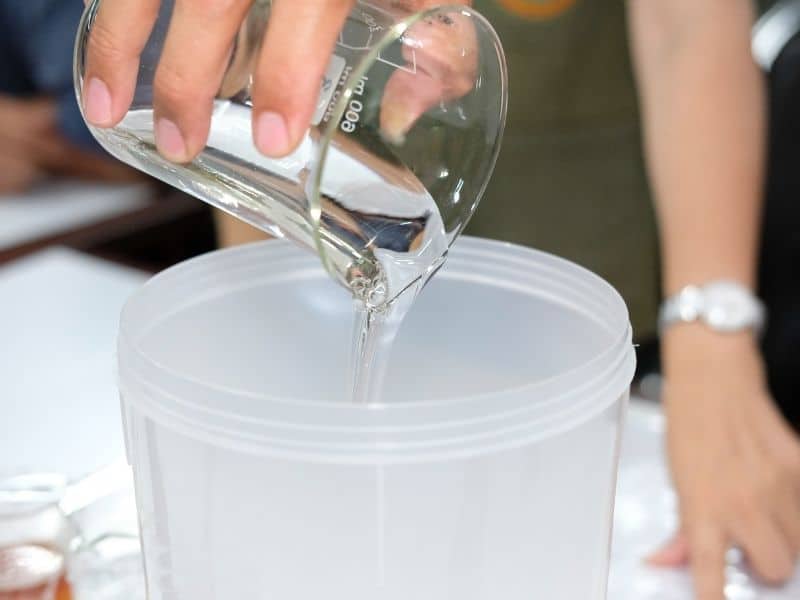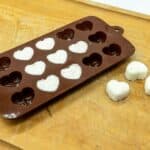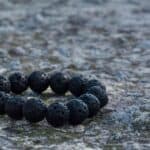When making melt and pour soap you need to make sure you use a heat-resistant container. Not all plastic containers can withstand the heat required to melt the soap base. The following are some of the best heat-resistant plastic containers that you can use for your melt-and-pour soapmaking.
Best Heat Resistant Plastic Containers
Here are some heat resistant plastic containers that can sustain the 125 F required to make melt and pour soap.
Cambro 6-quart round container
This is a round 6-quart polypropylene container that can be covered with a lid for further storage needs. It has measurement markers in both liters and quarts and is specifically optimal for soap making.
You need to buy a plastic lid cover that doesn’t come with this storage cup that fits this specific container. It doesn’t have a pour spout but there are two well-build handles on each side of the container rim making it easier to move around.
One-gallon measuring pitcher
This universal measuring cup is made from Polypropylene and will handle a full gallon of hot liquids. In terms of accurate measurement, it also lists 128 fluid ounces or 4000 milliliters and also features a handy conversion chart for US measurements.
The handle is specially designed for precision gripping and pouring which is produced by Turnah precision products.
TCP Global 2-liter graduated measuring pitcher
This plastic container from TCP Global is highly accurate for measuring in both liters and milliliters. It’s perfect for holding a total of 64 fluid ounces and is made from lye-resistant polypropylene.
It features a pitcher-style design with a pouring spout and handles that are already built-in. The good news is that this product comes in a pack of 4 pitchers and there are smaller pitchers available from this seller.
Eisco Labs 3-liter polypropylene beaker
When it comes to scientific precision and well-designed polypropylene, this container is also autoclaved safe. This pitcher can hold a total of 3 liters and has a substantial grip handle for expert pouring and control.
This is no wimpy plastic and features thick container walls that hold up well even when filled with hot liquid. It doesn’t have any measurements on the sides for visual marking but will accept sharpie pen lines to establish liters or fluid ounces.
TCP Global 5-liter graduated measuring pitcher
When you need to pour many soap forms at a time, this polypropylene container is the ultimate. This will hold 1.25 gallons and has additional graduated measurement info on the front and back.
The handle is built to support the entire pitcher with ease and comes in a pack of three. This is the largest pitcher that is available from TCP Global and is well worth investing in this set for all of your soap-making needs.
How To Choose Heat-Resistant Containers
The first thing that you want to look for is a stable container that isn’t going to be too tall. The reason for this is so it doesn’t tip over by accident which could be potentially risky if there is hot liquid involved.
Another important feature to look for is a pouring handle or grip that gives you better control when picking up a pitcher. Most pitchers have a pour spout that helps to control the liquid while pouring into small soap molds.
The type of plastic should be polypropylene and can be identified by the symbol on the bottom of each container within a triangle showing the two capital letters PP’ and the number 5′.
If you don’t see this symbol, you shouldn’t take a chance on the type of plastic. Tupperware plastic such as Rubbermaid is not always made from PP#5, so you must check the bottom to see if this symbol is present.
Polypropylene plastic is optimal for candle making since it can handle hot liquids better than most plastics. The other issue has a lot to do with what is lye-resistant. This is why plastic containers that are found at the paint store are good for mixing lye solutions rather than your pouring container.
But a good variety of plastic containers should be on hand when you are making different soap mixtures, so any formulas that you use with special essential oils or scents should also be sealable with lids made from the same polypropylene material.
Why Use Heat Resistant Plastic Containers
Many who are starting to make their own soap will often make the fatal mistake of using newer Pyrex glass containers that are made in the USA. While these are great for putting into the microwave, any soap mixture that includes lye will find that this chemically reacts with the newer Pyrex glass that is composed of soda-lime glass.
This results in the glass having a distinct green tinge which tells you right away it’s the US version. While you can still find older Pyrex measuring cups at garage sales and flea markets, who has time for that?
And ordering from internet sources to find the borosilicate glass versions might prove to be more frustrating since anything that is shipped from Europe might be too risky to have shipped and arrive in a million pieces. This is why looking for plastic alternatives is a better and cheaper choice for making hot soap formulas with lye.
Two good choices are good for plastic measuring containers which will be good solutions. The first is a matter of the type of plastic you wish to use. This will either include PP#5.
This is short for Polypropylene and is not only heat resistant, but it also resists lye. The other is HDPE#2 aka (high-density polyethylene), just like the plastic that is used for laundry detergent bottles.
The only downside to HDPE#2 is that it’s not good for heated liquids, so any mixture with lye must be cooled to room temperature before storing in these plastic containers. But to pour hot soap into soap forms and molds, PP#5 is the perfect solution.
Many of these measuring containers have to pour spouts to make pouring easier. They also feature a measuring guide to let you know how much is within each container.
The only downside to PP#2 containers is that many of these come from overseas and might stick with metric system measurements including liters, and milliliters, instead of quarts and gallons.
Despite this, conversion calculators are readily easy to figure out how much liquid or soap-making material is needed with what you might have in your kitchen already.
Frequently Asked Questions
When making soap, it is important to use a heat resistant container as some of the ingredients used can be harmful if come into contact with heat.
Some good types of heat resistant plastic containers include PP#5 and HDPE#2.
No, other types of plastic containers should not be used when making soap as they may not be heat resistant.
No, there are no dangers associated with using heat resistant plastic containers when making soap.
If your heat resistant plastic container breaks, you should dispose of it immediately and wash your hands thoroughly.
Conclusion
When making soap, it is important to use a heat-resistant container to avoid any harmful chemicals coming into contact with heat. PP#5 and HDPE#2 are both good choices for heat-resistant plastic containers. If your heat-resistant plastic container breaks, you should dispose of it immediately and wash your hands thoroughly.






